View Our Smile Gallery
Every smile that comes through our doors has a story to tell, and thanks to our team, we make sure they always end with health, beauty, and confidence. Below, you’ll find just a small sample of the great work Dr. Branberg and our team do every day here at The DFW Dental Implant Center. Know that beautiful results like these can be yours, and they are just a phone call away.
FULL-ARCH IMPLANT BRIDGES

All of his teeth were removed because of severe cavities and gum disease. A delayed approach was taken because he had smoked a pack of cigarettes every day for 40+ years. After 4 months of healing, 6 dental implants were placed in the upper and lower jaws. After 4 months of healing, full-arch implant bridges were placed to restore his smile and his bite.
PORCELAIN CROWNS + SINGLE IMPLANT CROWN + IMPLANT BRIDGES

After orthodontic treatment to straighten the teeth, all of the lower teeth were removed. 6 dental implants were placed and a full-arch temporary bridge was placed the day of surgery. After 4 months of healing, porcelain crowns were placed for the upper front teeth, single implant crowns were placed in the upper left molar area and implant bridges were placed in the lower jaw.
PORCELAIN CROWNS + IMPLANT BRIDGES
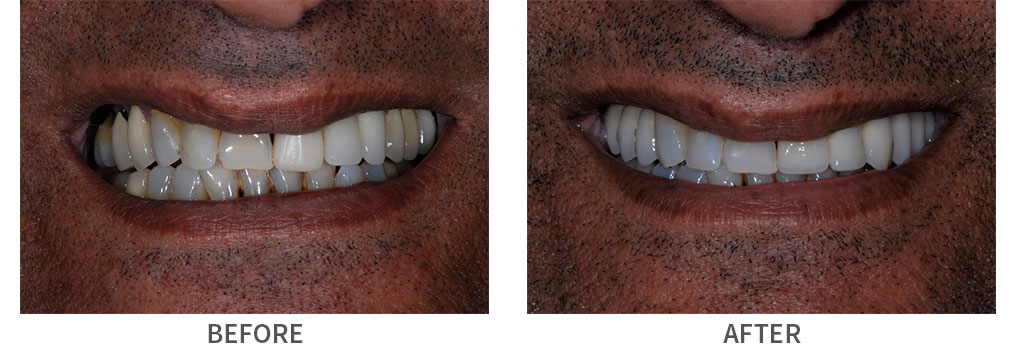
After extracting all of the back teeth and the upper left front teeth because of large cavities and gum disease, dental implants were placed. His smile and bite were restored with a combination of Porcelain Crowns and Implant Bridges.
SINGLE IMPLANT CROWN
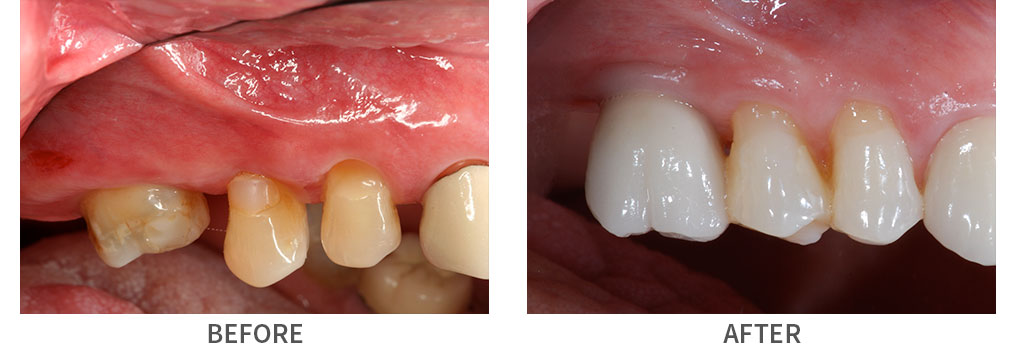
After orthodontic treatment to shift the premolars forward to close the space, the upper right back molar was removed and grafted with allograft bone particles. Four months later, a dental implant was placed according to the new position of the teeth. Four months later, the final single implant crown was delivered.
SINGLE IMPLANT CROWN + PORCELAIN CROWN + TOOTH-COLORED FILLING
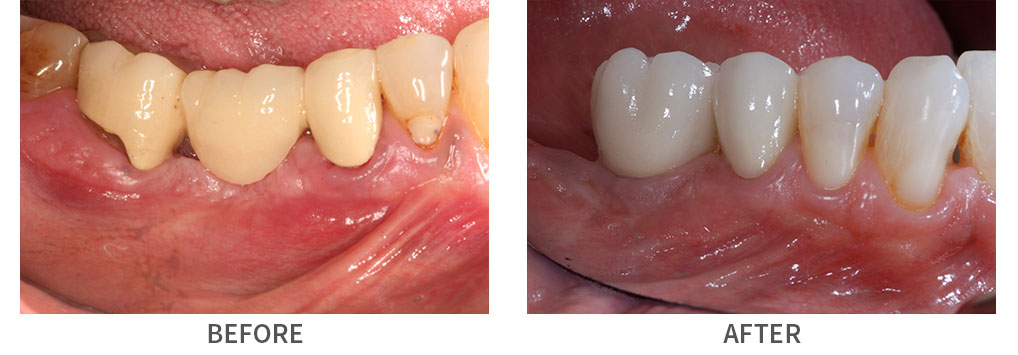
The two back teeth on the lower right had failing root canals, tooth infections and cavities so they were treatment planned to be removed. Only one dental implant was placed to replace the molar. The two smaller premolars were restored with a porcelain crown and tooth-colored filling.
IMPLANT BRIDGE
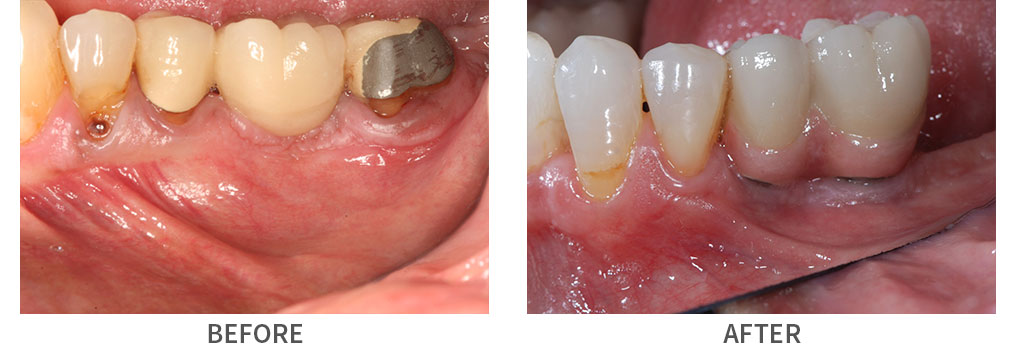
The existing tooth-supported bridge on the lower left had chipped porcelain on the back tooth, cavities around the margins of the teeth and gum disease. Both of the teeth that were supporting the bridge were removed and 2 dental implants were placed. The final implant bridge had only 2 teeth instead of 3 teeth like the original because were not going to replace the opposing tooth.
IMPLANT BRIDGE
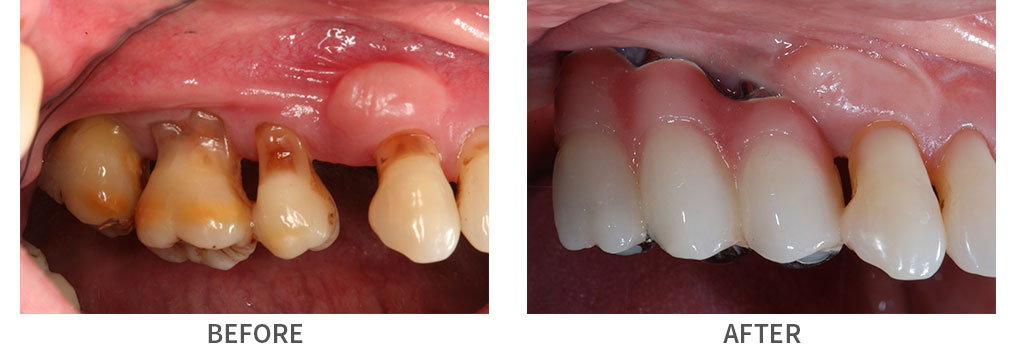
The back teeth on the upper right had gum recession with exposed roots, cavities and discoloration, and they had shifted position because of multiple missing teeth. After a sinus lift bone graft, 3 dental implants were placed and a 3-unit implant bridge was delivered to improve chewing efficiency.
IMPLANT BRIDGE
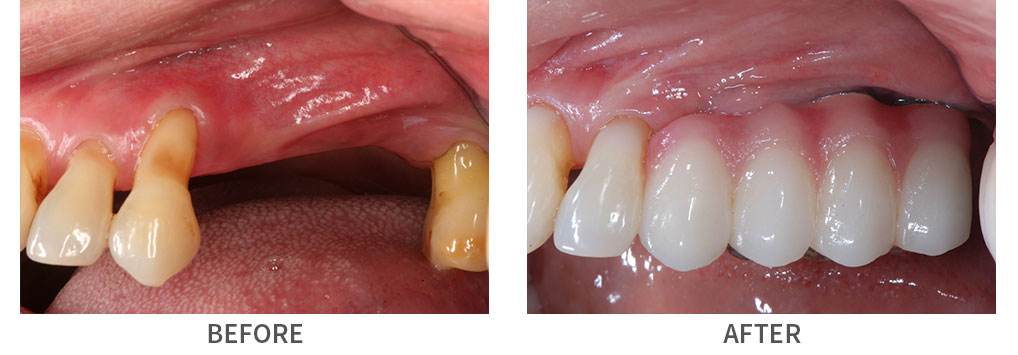
Multiple back teeth were missing on the upper left with severe bone loss and gum recession for the remaining 2 back teeth. The remaining back teeth were removed, the area was grafted with autogenous bone and 3 dental implants were placed. The upper left back teeth were restored with a 4-unit implant bridge. Pink porcelain was added to make the teeth look more natural.
IMPLANT BRIDGE
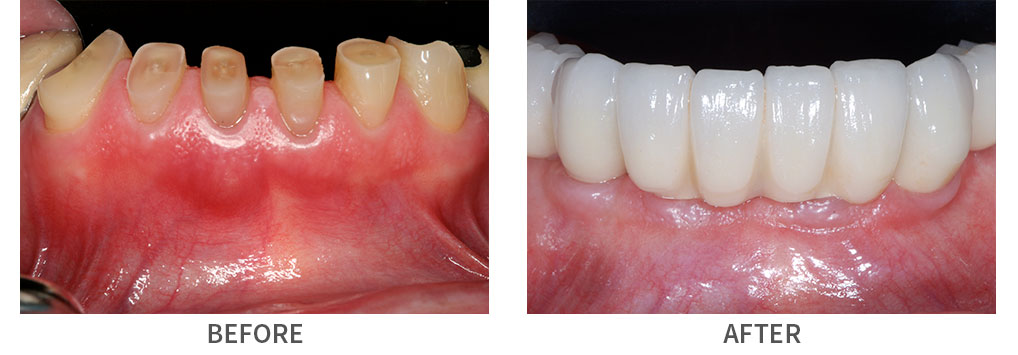
The lower front teeth had severe wear from night-time teeth grinding. As a result, the teeth were very short and could not be saved. The six teeth were extracted and 2 dental implants were placed to support a 6-unit implant bridge.
IMPLANT BRIDGE
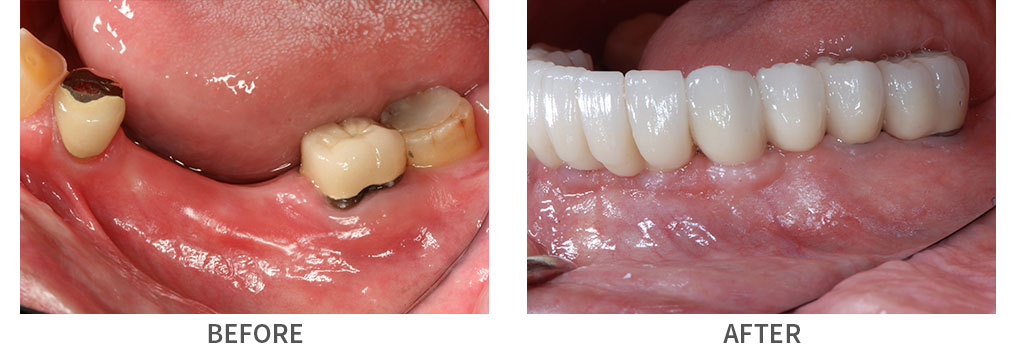
Multiple back teeth were missing on the lower left with the remaining teeth having cavities and minimal remaining tooth structure. The three back teeth were removed and three dental implants were placed. A 4-unit implant bridge was placed to restore the bite and improve chewing.
FULL-ARCH IMPLANT BRIDGE
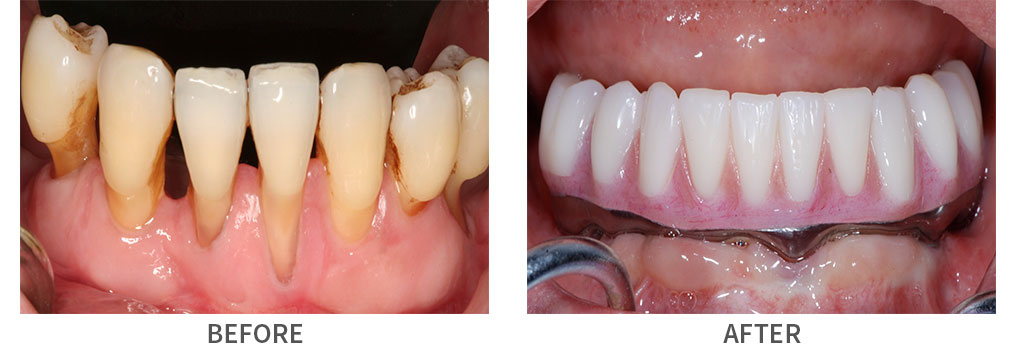
All of the lower teeth had severe bone loss and gum disease, cavities, staining and mobility. They were removed and five dental implants were placed with an immediately full-arch temporary bridge being delivered after the surgery was complete. Denture teeth were bonded to a milled titanium bar and connected directly to the dental implants. The new teeth functioned and looked like natural teeth.
PORCELAIN CROWNS
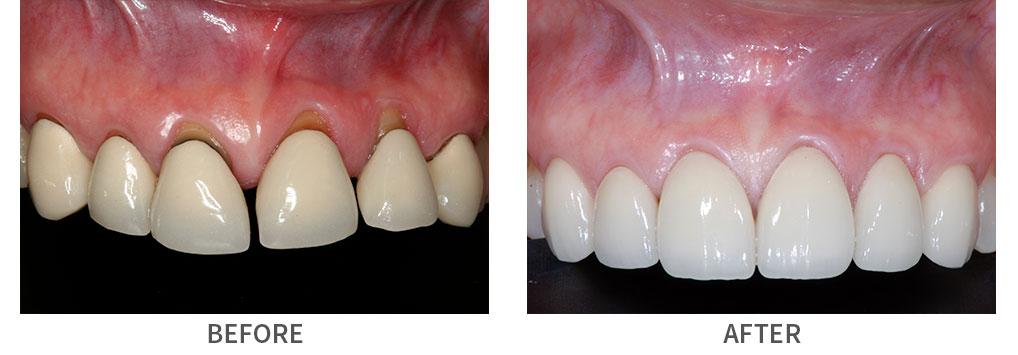
After orthodontic treatment to close the spaces between the teeth and to move the upper left front teeth down, new porcelain crowns were made for the upper front six teeth.
PORCELAIN CROWNS
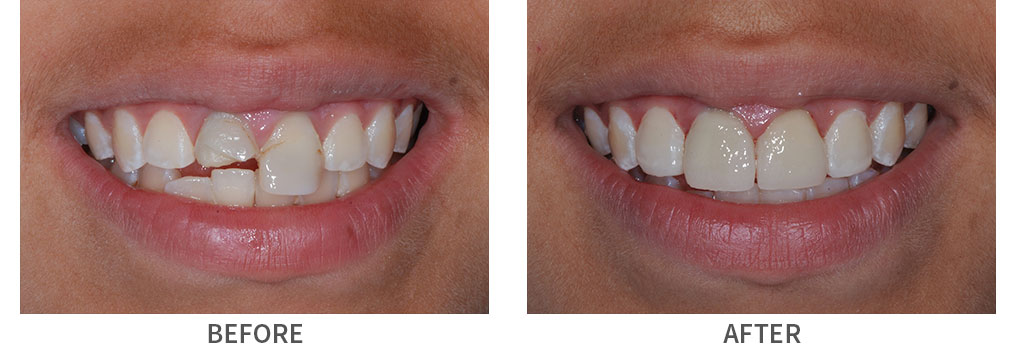
The upper right front teeth fractured in half and the upper left front tooth suffered a horizontal root fracture towards the tip while playing High School softball. Since she was too young to have dental implants placed, the teeth were treated with root canals and porcelain crowns to restore her smile until she turned 19 and could have the teeth replaced with dental implants.
MARYLAND BRIDGE

The upper left front tooth was knocked out playing High School football. He was too young to have a dental implant placed and we did not want to drill on his natural teeth, so we bonded a porcelain tooth to the neighboring front tooth to fill in the space and restore his smile until he was old enough to have the tooth replaced with a single implant crown.
GUM SURGERY + TOOTH-COLORED FILLINGS
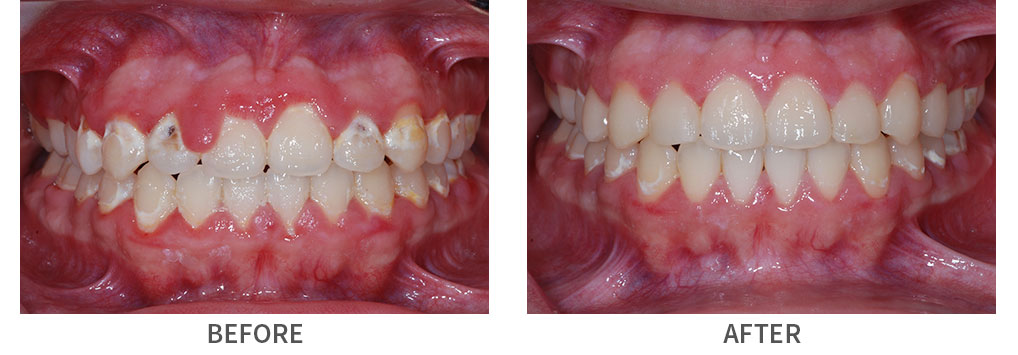
Following orthodontic treatment, the gums were very inflamed and there were multiple areas with cavities and decalcification. Gum surgery was performed to shape the gums and tooth-colored fillings were placed to fix the decay and restore the smile.
TOOTH-COLORED FILLINGS
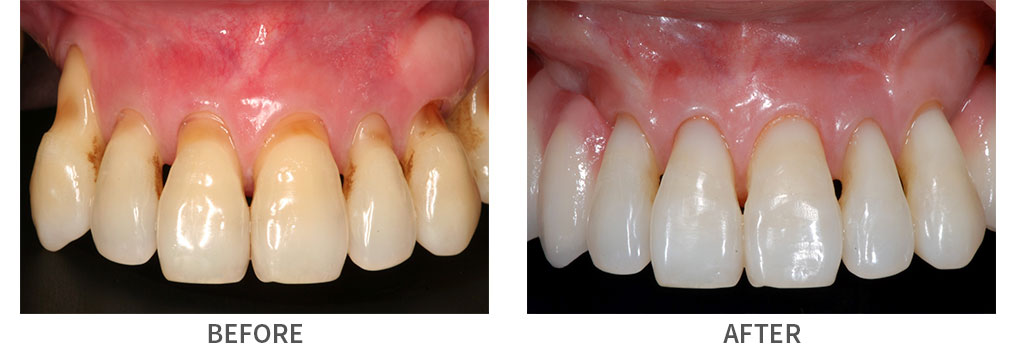
The upper front teeth had gum recession, discoloration and soft roots. Tooth-colored fillings were placed over the exposed roots of the five front teeth to improve her smile.
TRADITIONAL COMPLETE DENTURES
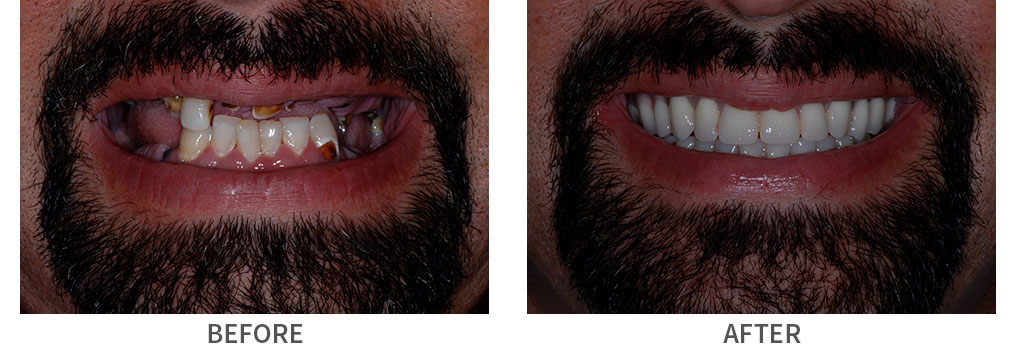
The upper and lower jaws had numerous decaying root tips, broken teeth, large cavities and tooth infections. All of the teeth were removed and immediate complete dentures were placed after the surgery was complete. Six months later, the final upper and lower complete dentures were delivered.
GUIDED DENTAL IMPLANT SURGERY
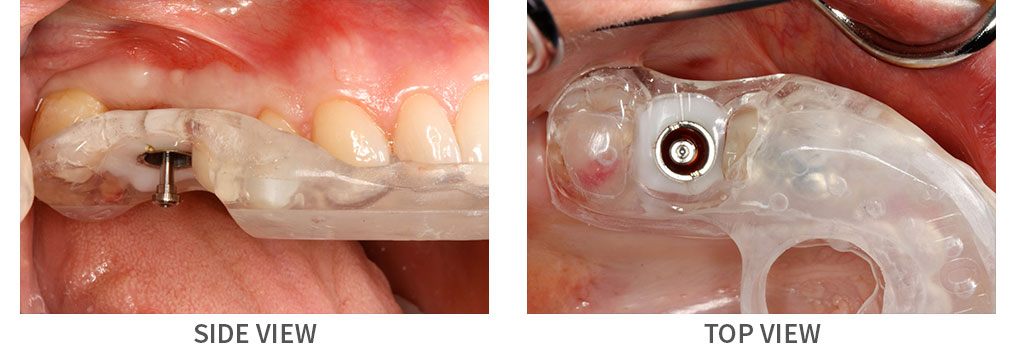
A surgical guide was used to ensure correct placement of the dental implant. The position of the dental implant is planned in the 3D treatment planning software and then the guide is made. During the surgery, the guide is positioned against the teeth and the implant is placed through the metal cylinder. This predictably positions the dental implant in between the neighboring teeth and at the correct depth for a natural looking single implant crown.
DIAGNOSTIC WAX-UP
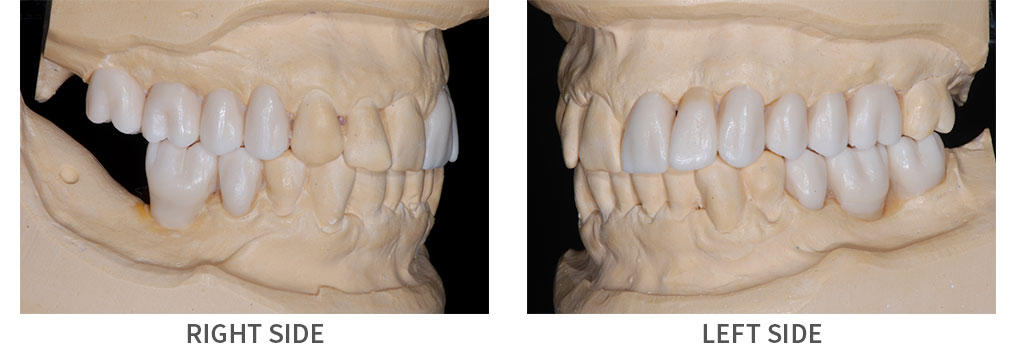
A diagnostic wax-up is an important part of implant, cosmetic and restorative dentistry. This crucial step allows the patient and treating dentist to evaluate the final restorative outcome before dental treatment is started and makes dental treatment more predictable.
FULL-CONTOUR WAX-UP
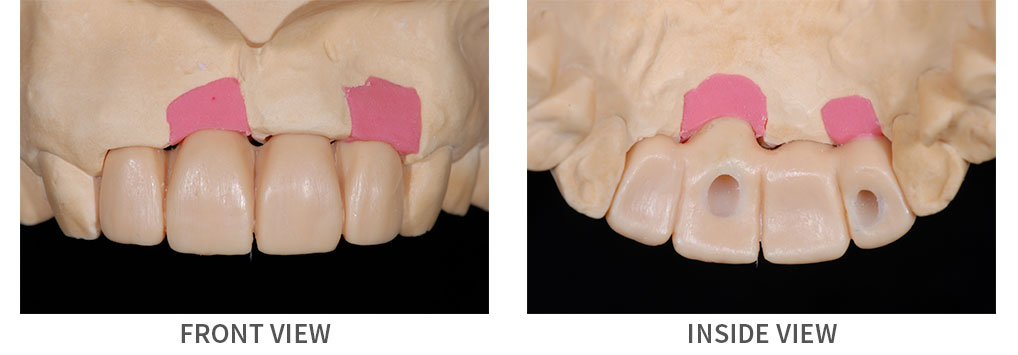
The full-contour wax-up or digital treatment plan is an important step for the patient and treating dentist to be able to tell the lab technician what size, shape, contour, position and color that is desired.
PREDICTABILITY

Proper diagnostic records and treatment planning are very important when treating cosmetic cases. The goal of dental treatment is for the diagnostic wax-up, temporary teeth and final restorations to mimic one another. This allows the patient to know what he/she can expect from the final restorations.
